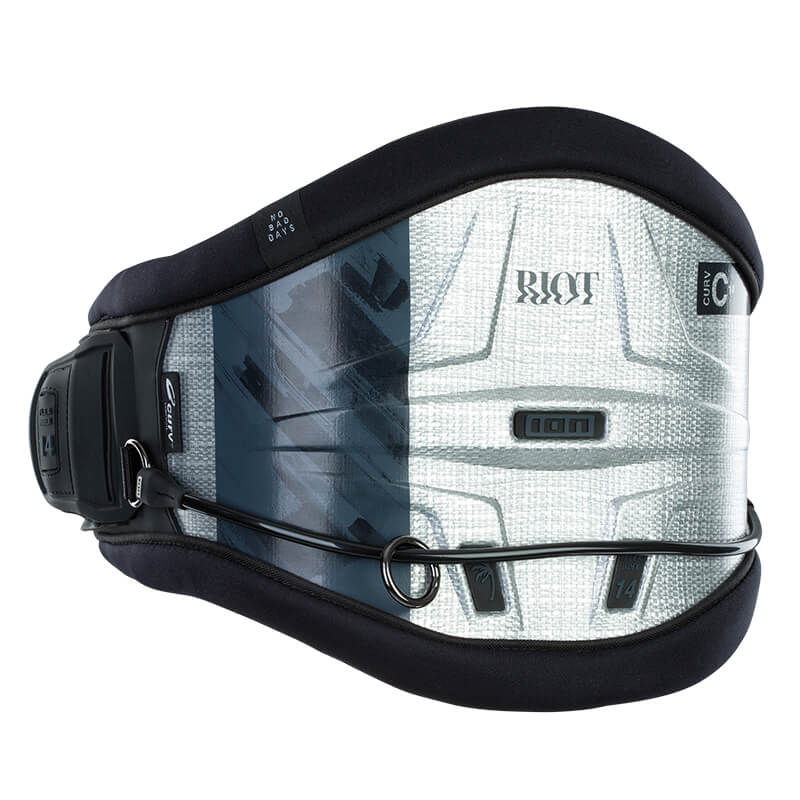When you purchase gear through links on our site, we may earn a small commission. Here’s why you can trust our tests and our affiliate partner.

Ion have produced some intriguing lightweight high-end hardshell harnesses this year all with different flex characteristics demarked by their flex index number. We tested the Curv 14, which has a lower cut backplate for more freedom of movement and minimalistic approach. Note that, while it is currently the stiffest harness in the range, Ion will soon be launching the Riot Curv 18 (Aaron Hadlow Signature) which will be stiffer again.
Getting the harness on is a simple process – an initial Velcro belt fastens over, and then the C-Bar 3.0 clips over solidly with two hooks engaging into the webbing. The webbing has some vertical grooves, and two sprung clips on each side make adjusting in tiny, but very positive increments a simple process. The webbing tails tuck behind an elastic pocket keeping everything neat and tidy.
A generously thick foam pad sits behind the spreader bar that protects the ribs and compresses well without being too harsh. The final closure lever cinches the harness up another few millimeters and makes an extremely tight fit if required. Once it’s set up to your waist size, we found you can generally leave the webbing system alone, and just crank it on with the lever system, which is great for a fuss free start to your session. A cunning small webbing tab on the end of the closure lever allows you to lift it enough to be able to get your fingertip behind the lever to release it, which is important, as if your hands are cold it could be tricky to get your fingers behind and gain the pressure required.
The C-Bar 3.0 is a flexible composite affair and comes with various options for connecting your kite. A standard steel kite hook can be bolted in with three simple Torx bolts, and works great for unhooked work. For the sliding spreader wave option, Ion have pulled something quite unique out of the bag and have gone for a flat ‘climbing sling’ style webbing rather than the usual round Dyneema rope. This should wear better and orient itself well to the chicken loop. It feels more frictionless than some systems we’ve used and is a masterstroke carried over and implemented well from another sports industry.
The final option is a closed fixed aluminum Quicklock system designed with the purely hooked-in freerider in mind. A small tab lifts a sprung gate system underneath the smooth molded hook and locks in completely, and as a bonus this is achievable one-handed. This has a great safety application and could be a nifty system to use in school and underpowered situations where a standard chicken loop can twist and pop out. For the strapped, the system makes a lot of sense and you can dispense with your chicken loop retainer completely. Ion have kindly provided the relevant Torx tools and swapping between the different modes is not a difficult procedure.
The slim profile back plate is great for waves and smaller people’s back profiles. It tucks into the arch of your back very well. As with any minimal hard shell harnesses a try before you buy fitting is advised to make sure it’s compatible with your body shape. The Riot Curv 14 is a great harness, you can get it so tight it will literally crush your organs; there was no discernible ride up whilst wearing a wetsuit, and the flexibility in the webbing would allow you to adapt for wearing a rashie.